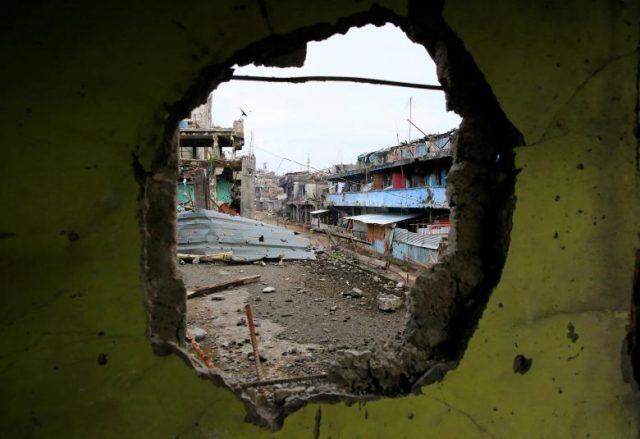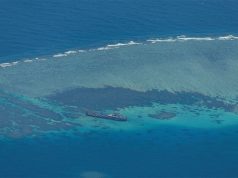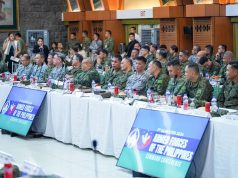MANILA – Despite being declared “liberated” by President Duterte last week, fighting continued Sunday in Marawi City, where government forces gave some 30 Maute Group holdouts until midnight of Monday to surrender, promising to treat them humanely.
Authorities declined to use the word “ultimatum” but Col. Romeo Brawner, deputy commander of the Joint Task Group Ranao (JTGR), said in a briefing that the holdouts have until midnight to give up.
The military on Sunday also said there are no more civilian hostages held by the Maute terrorists inside a heavily fortified building in Marawi, where the estimated 30 terrorists are said to be making a last stand.
It was learned that a handful of so-called noncombatants – wives of some Maute fighters who have refused to abandon their husbands – are with the holdouts in the basement of a building.
Brawner said they believe only five foreign terrorists remain with the Maute Group. The Islamic State-inspired homegrown terrorists had teamed up with some Southeast Asian jihadis, sparking concern, especially among Malaysia and Indonesia, that the IS was beefing up its presence in the region after being driven out of strongholds in Iraq and Syria.
As of Sunday, the Armed Forces had rescued the last 20 hostages held by the Maute Group, which seized the city on May 23 along with the Abu Sayyaf unit of Isnilon Hapilon.
President Duterte declared Marawi liberated last week after Hapilon and Omarkhayam Maute were confirmed killed by the government troops, but clearing operations continue.
As of Sunday, government data show 919 terrorists killed and 864 firearms seized.
A total of 1,780 civilian hostages were rescued; but 165 government forces were killed in the fierce battles – on air and on the ground – that left the bustling Islamic city in near-total ruins.
The military reopened 9 barangays that were least affected by fighting, but set an Oct. 25 or 26 timeline for allowing people back in to other parts of the city, mainly because of two things: every corner must be cleared of any explosive material; and basic services like water and power must at least be present.
In all, nearly 400,000 residents were displaced by the fighting, which saw the Philippines pouring in units from across the country while getting material and technical help from allies like the US, Australia and China.










